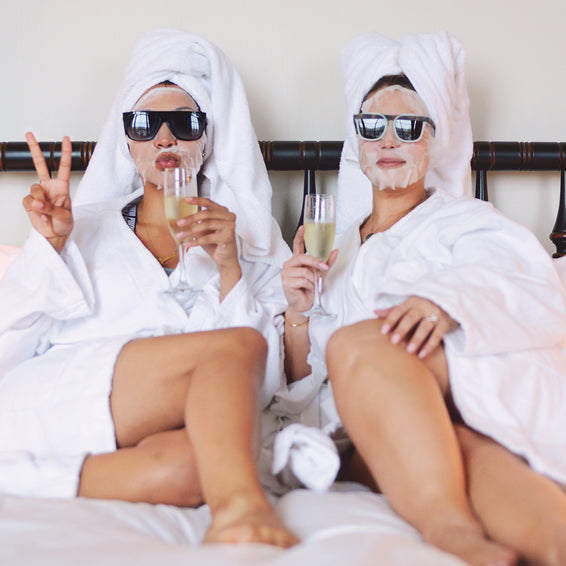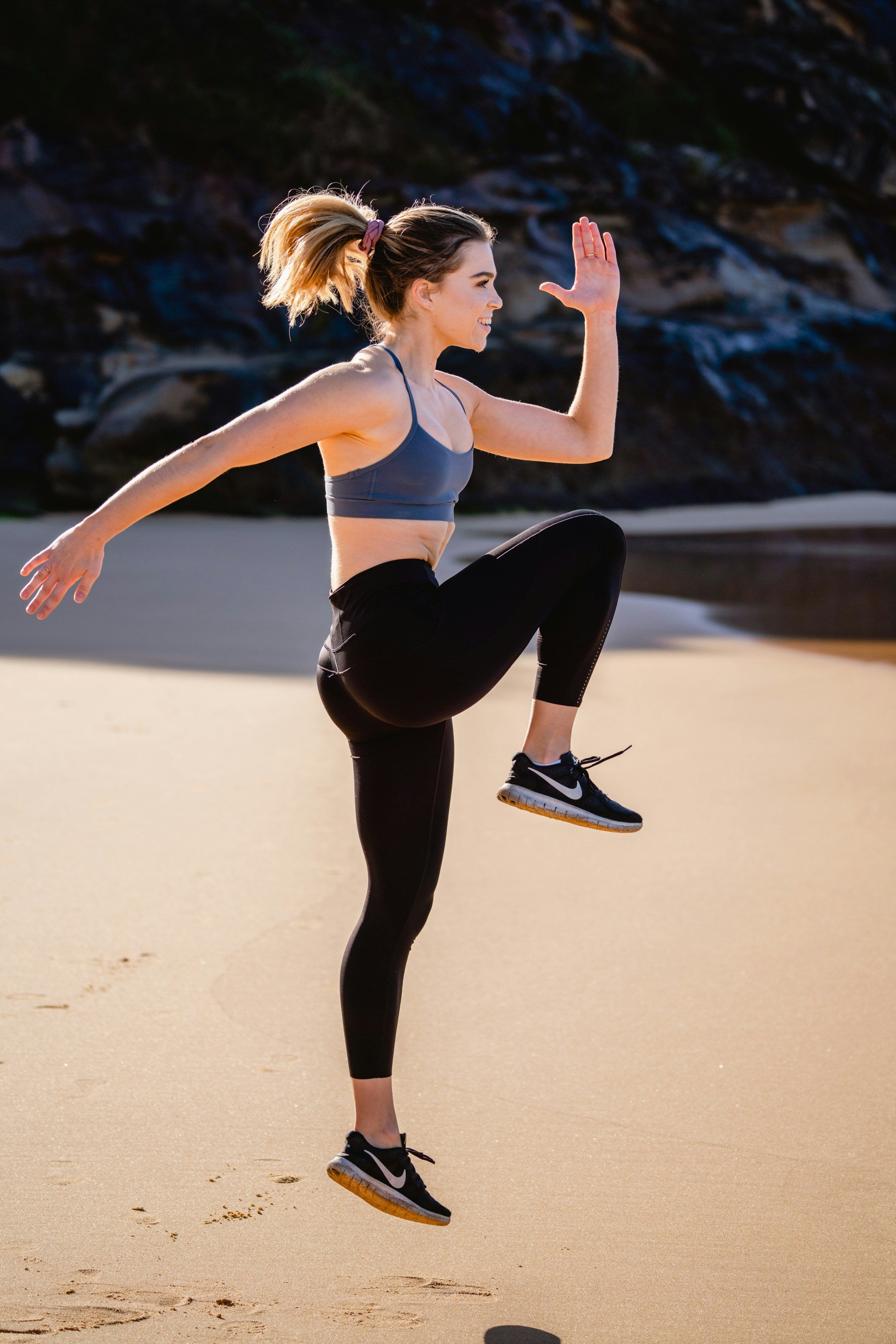Seven Ways to Protect Your Skin from Sun Damage

With summer officially here in the Northern Hemisphere, suntans—and sunburns—are a common sight. Most people know that elongated exposure to the sun can create more than just a tan, but it can also damage the skin you're trying to darken. What can you do to minimize or reverse sun-damaged skin?
Fortunately, some simple, easy-to-perform steps can help reverse or prevent damage:
1) Reduce exposure: Wear wide-brimmed hats outside. Not only does this shade your head and neck, it can help keep you cool. Wear long-sleeved shirts or light slacks to cover your arms and legs while outside. Shorts and tank tops may be cooler, but they do nothing to prevent the sun's UV rays—what causes skin damage—from penetrating the epidermis, your outer skin layer. Loose clothing is much, much cooler than skin-tight clothing. If you are going outside for long, try loose blouses and linen slacks instead of jeans and heavier cotton. However, 100-percent cotton is cooler than blends.
2) Wear high-level sun screens: Generously lather your hands and other bare skin with a high-scaled sun screen which blocks UV-ray penetration. Reapply often, especially after perspiring and swimming.
3) Shade: Don't think you are a wimp by sitting in the shade instead of the sun. You're just being smart. While you will still be exposed to some UV rays under a tree, you will get bombarded by fewer there than in that hot sun.
4) Exfoliate: In the shower, gently rub an exfoliating cream or luffa scrub across your skin. You rid yourself of the dead, dry skin that can cause itching, which, in turn, can compromise your skin's integrity and further damage your skin.
5) Moisturize: While still in the shower, rub moisturizing cream or baby oil into your skin. Let your skin have as much as it will absorb. After a few applications, you should be able to tell when your skin as had enough, and you can reduce extra applications. Until then, rub small amounts in all over your body and repeat until it doesn't easily absorb. Once you reach that point, gently wipe away the excess lotion with soft soap and a soft wash cloth. Rinse in cool water—not hot. Talk with your doctor or pharmacist regarding effective moisturizing creams that counter sun damage.
6) Moisturizing makeup: While most men don't wear this, most women do. Regardless of your gender, if you wear any make up for work or play, for your professional use or your personal use, always use make up that also moisturizes your face and neck. Be sure to cover well your eyes, mouth and neck—areas that are often in need of the tightening properties of properly moisturized skin.
7) Supplements: Taking supplements that provide a high—but accepted—level of anti-oxidents helps your skin recover from sun damage. They also help prevent chances of contriving skin cancer. Vitamins and minerals help your skin regenerate and stay elastic—what keeps you looking young!
Some sun worshipers experience more than dry skin, though: They find darker spots that don't seem to go away. Many people call these 'liver spots,' due to their color, though they have nothing to do with age specifically.
These dark spots are the body's self-defense against too much sun. The body produces more pigment in an attempt to ward off damage. Age is coincidental only: As you age, you have exposed your skin to damage from the sun's rays longer. Young people can also develop liver spots if they are repeatedly exposed to the sun for long periods of time without proper sun screening. Please note: Freckles are not liver spots! They are excess pigment, which may indicate a predilection to liver spots later.
There are two types of UV rays. UVA rays are what produces sunburn. UVB rays cause premature skin aging and is what leads to skin cancer. Make sure your sun screen protects you from both types!

Fortunately, some simple, easy-to-perform steps can help reverse or prevent damage:
1) Reduce exposure: Wear wide-brimmed hats outside. Not only does this shade your head and neck, it can help keep you cool. Wear long-sleeved shirts or light slacks to cover your arms and legs while outside. Shorts and tank tops may be cooler, but they do nothing to prevent the sun's UV rays—what causes skin damage—from penetrating the epidermis, your outer skin layer. Loose clothing is much, much cooler than skin-tight clothing. If you are going outside for long, try loose blouses and linen slacks instead of jeans and heavier cotton. However, 100-percent cotton is cooler than blends.
2) Wear high-level sun screens: Generously lather your hands and other bare skin with a high-scaled sun screen which blocks UV-ray penetration. Reapply often, especially after perspiring and swimming.
3) Shade: Don't think you are a wimp by sitting in the shade instead of the sun. You're just being smart. While you will still be exposed to some UV rays under a tree, you will get bombarded by fewer there than in that hot sun.
4) Exfoliate: In the shower, gently rub an exfoliating cream or luffa scrub across your skin. You rid yourself of the dead, dry skin that can cause itching, which, in turn, can compromise your skin's integrity and further damage your skin.
5) Moisturize: While still in the shower, rub moisturizing cream or baby oil into your skin. Let your skin have as much as it will absorb. After a few applications, you should be able to tell when your skin as had enough, and you can reduce extra applications. Until then, rub small amounts in all over your body and repeat until it doesn't easily absorb. Once you reach that point, gently wipe away the excess lotion with soft soap and a soft wash cloth. Rinse in cool water—not hot. Talk with your doctor or pharmacist regarding effective moisturizing creams that counter sun damage.
6) Moisturizing makeup: While most men don't wear this, most women do. Regardless of your gender, if you wear any make up for work or play, for your professional use or your personal use, always use make up that also moisturizes your face and neck. Be sure to cover well your eyes, mouth and neck—areas that are often in need of the tightening properties of properly moisturized skin.
7) Supplements: Taking supplements that provide a high—but accepted—level of anti-oxidents helps your skin recover from sun damage. They also help prevent chances of contriving skin cancer. Vitamins and minerals help your skin regenerate and stay elastic—what keeps you looking young!
Some sun worshipers experience more than dry skin, though: They find darker spots that don't seem to go away. Many people call these 'liver spots,' due to their color, though they have nothing to do with age specifically.
These dark spots are the body's self-defense against too much sun. The body produces more pigment in an attempt to ward off damage. Age is coincidental only: As you age, you have exposed your skin to damage from the sun's rays longer. Young people can also develop liver spots if they are repeatedly exposed to the sun for long periods of time without proper sun screening. Please note: Freckles are not liver spots! They are excess pigment, which may indicate a predilection to liver spots later.
There are two types of UV rays. UVA rays are what produces sunburn. UVB rays cause premature skin aging and is what leads to skin cancer. Make sure your sun screen protects you from both types!
This article was contributed by Sara Woods of Coupon Croc, the best place to find huge savings on your summer travel plans by using a Travelodge discount code.
]>>


